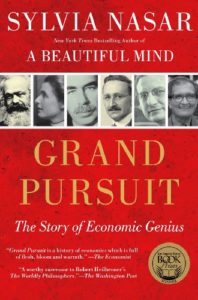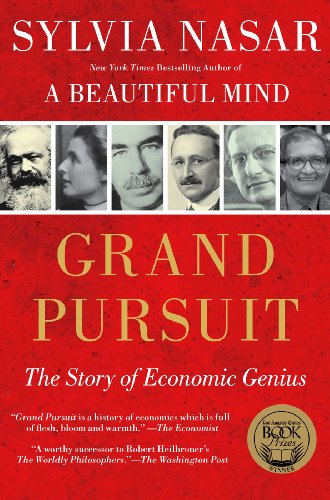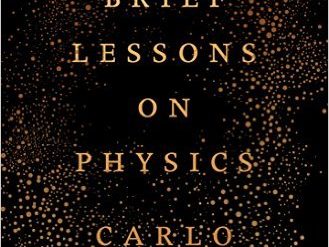
It’s well known that Thomas Carlyle, a 19th century British historian, is credited with first calling economics “the dismal science.” What’s much less widely appreciated is that this derogatory label was well justified when he set the phrase down on paper in 1849.
Until well into the 19th century, as Sylvia Nasar shows so clearly in Grand Pursuit, economics was, indeed, dismal. The gloomy predictions of Thomas Malthus dominated discussions about the economy, and then Charles Dickens and other social reformers got into the act in mid-century, decrying the deplorable conditions of the poor and the heartless assumption that their lot could never improve. Karl Marx, writing in the same era, differed only in that he asserted their lives would be better only after a revolution because capitalism would never refrain from rank exploitation.
It was only in the 1880s that economics, gradually coming into its own as a field of study, came to view the economy not as static but as a dynamic process that evolved as the productivity of labor increased. An English economist named Alfred Marshall set out to understand the field in this new way but never succeeded in his quest. He “discovered that an ingenious mechanism of competition encouraged business owners to make constant, incremental improvements in productivity that accumulated over time and, simultaneously, compelled them to spread the gains in the form of higher wages or lower prices.” Marshall’s thinking held sway for many years. Then, in the following decade, there emerged a remarkable figure who moved the center of gravity in the discussion far to the left: a woman named Beatrice Webb.
Grand Pursuit: The Story of Economic Genius by Sylvia Nasar (2011) 578 pages ★★★★☆
Of all the brilliant men and women Nasar portrays in Grand Pursuit, Beatrice Webb is clearly her favorite. Born Beatrice Potter, one of nine sisters, she was brilliant, beautiful, and wealthy. She joined the Fabian Socialist circle whose stars were Sidney Webb and H.G. Wells, eventually marrying Sidney, a gnomish little man who seems to have taken his place in her shadow. Working from a Marxist perspective, Beatrice invented the concept of the welfare state, Marx’s own disdain for the idea notwithstanding. She “showed that destitution was preventable and that providing education, sanitation, food, medical, and other forms of in-kind assistance would increase private sector productivity and wages more than taxing would decrease it.” The Webbs and Wells also cofounded the London School of Economics.
The next major figure in Nasar’s account was Irving Fisher, an American economist who held forth at Yale for decades, lionized by his peers and the public alike. Fisher “was the first to realize how powerfully money affected the real economy and to make the case that government could increase economic stability by managing money better. By pinpointing a single common cause for the seemingly opposite ills of inflation and deflation, he identified a potential instrument—control of the money supply—that government could use to moderate or even avoid inflationary booms or deflationary depressions.” However, brilliant though Fisher undoubtedly was, it was he who famously proclaimed, just three days before the crash in October 1929, “Stock prices have reached what looks like a permanently high plateau.” Fisher lost a fortune he’d blithely invested on margin in stocks.
A focus on the Austrian School
Nasar focuses next on the Austrian School, dwelling largely on the ups and downs of Joseph Schumpeter’s career. Friedrich Hayek, the darling of the Right, receives less attention. His views remained only briefly in vogue and have apparently been greatly misunderstood by the latter-day “conservatives” who profess to sit at his feet (and whom Hayek himself despised). Schumpeter was more influential, serving for a time as Minister of Finance in the post-World War I Austrian government and occupying key academic positions in Great Britain and the United States. He “focused on the human element. For him, development depended primarily on entrepreneurship . . . In contrast to Marx’s automaton capitalist . . ., the entrepreneur distinguished himself by a willingness to ‘destroy old patterns of thought and action’ and redeploy existing resources in new ways.” Echoes of Schumpeter’s thinking continue to feature prominently in contemporary economic discussions.
Drilling down on the work of John Maynard Keynes
Nasar devotes considerable attention to John Maynard Keynes, who was by all accounts the dominant figure in world economics for decades. She dismisses the notion that Keynes’ contribution was to advance the concept of deficit spending. “Beatrice Webb, Winston Churchill, and Herbert Hoover had all embraced deficit spending before Keynes,” she writes. In fact, the principal reason why his General Theory of Economics represented such a major advance for the field “was Keynes’ proof that it was possible for a free market economy to settle into states in which workers and machines remained idle for prolonged periods of time—that there were depressions that, unlike the garden-variety ones, were not brief and didn’t end of their own accord as a result of falling prices and interest rates.”
Keynes argued that monetary policy—increasing or decreasing the money supply—wasn’t sufficient. Fiscal policy changes were required: “cutting taxes and letting businesses and individuals keep more of their income so that they could spend it. Or, better yet, having the government spend more money directly, since that would guarantee that 100 percent of it would be spent rather than saved.”
Surveying the modern era’s economic icons
More recent economic icons such as Joan Robinson (Keynes’ Communist protege) and Milton Friedman figure in Nasar’s account of developments in the field after Keynes. However, she reserves her most respectful treatment for the brilliant Indian economic thinker, Amartya Sen. Born in Dhaka in 1933 in what is today Bangladesh, Sen holds an endowed chair at Harvard. Much of his work—and a major reason why he won the Nobel in economics in 1998—concerns the technical concept of “social choice,” which I find abstract, confusing, and purely of academic interest. But Sen’s widely quoted studies of the causes of famine are anything but abstract, and his concern for the poor distinguishes his ethical approach to economics. Of all those described at length in Grand Pursuit, Sen is the only one still living.
Sylvia Nasar, an economist herself, previously wrote A Beautiful Mind, a biography of the extraordinary mathematician John Nash. Grand Pursuit is a worthy successor to A Beautiful Mind, as it is to Robert Heilbroner’s similar effort, The Worldly Philosophers, now a classic which I recall reading as a teenager.
For further reading
This is one of the books I’ve included in my post, Gaining a global perspective on the world around us.
You’ll find this book listed on my post, 5 top nonfiction books about World War II.
You might also enjoy Science explained in 10 excellent popular books.
If you enjoy reading nonfiction in general, you might also enjoy:
- Great biographies I’ve reviewed: my 10 favorites
- My 10 favorite books about business history
- 20 top nonfiction books about history
And you can always find my most popular reviews, and the most recent ones, plus a guide to this whole site, on the Home Page.




























What a timely book! Thank you, Mal, for introducing us to it
Ann-Marie Hogan